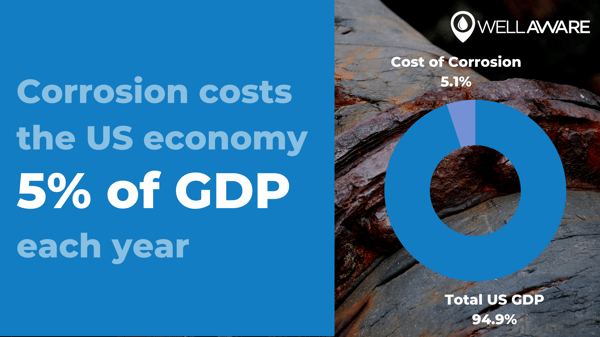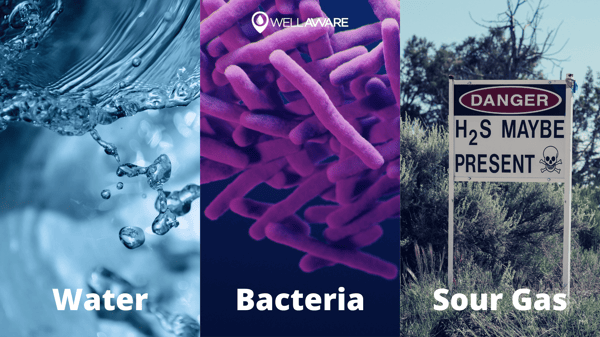
News, Insights, and more on Industrial IoT

We depend on industrial chemicals in countless ways.
Chemicals are vital for developing products, substances, and resources that power the global economy, fill our stores, and feed our families. Ultimately, without chemicals, so much of the manufacturing work that drives production wouldn’t be possible.
Industrial specialty chemicals are especially valuable when it comes to maintaining the integrity of critical assets. We need chemicals to fend off corrosion, kill harmful bacteria, and neutralize hazardous byproducts that would otherwise damage essential infrastructure and machinery.
However, administering the right amount of chemical at the right time to the right location 24/7 is nearly impossible with the current status quo of chemical management operations. Industrial manufacturing processes are highly dynamic, changing rapidly to maximize and accelerate production.
Sadly, chemical treatment programs rarely keep up, putting industrial assets at constant risk of failure. To be successful, operational managers need real-time, automated chemical programs, along with detailed visibility into their performance.
Here, we discuss why these capabilities are so important in maintaining asset integrity by highlighting the consequences of improper chemical dosing. Furthermore, we share some ways to achieve what chemical program managers need to optimize their chemical applications and create long-term value for their organizations.

Through chemical treatment, we can prolong the life of industrial machinery, equipment, and processes by preventing many types of problems, including corrosion, stress and strain, wear and erosion, and external damage. When we don’t apply chemical treatment properly, the consequences can be severe. Below are a few examples.
Many companies use corrosion inhibitors to protect internal pipe surfaces from oxidative reactions. When corrosion inhibitors are under-injected, pipes are exposed unnecessarily to corrosive materials. If over-injected, corrosion inhibitor molecules bind together, which can cause adverse downstream effects that harm production quality.
Every year, corrosion costs the U.S. economy roughly $1.1T each year! With better chemical injection, industrial leaders could save billions in direct and indirect expenses.
We use biocides to prevent bacterial growth that would otherwise cause corrosion or fouling on surfaces. When biocides are under-injected, bacteria can proliferate and produce byproducts that require deeper cleaning or disinfection. When over-injected, biocides can cause bigger public health and environmental issues.
Researchers have estimated that microbiologically influenced corrosion (MIC) accounts for 20% of total annual corrosion costs. Borrowing the $1.1T statistic from the previous section, poor bacterial management costs the U.S. billions of dollars each year.
We use industrial chemicals referred to as “scavengers” to seek out hazardous byproducts and neutralize their effects. If chemical systems under-deliver scavengers, corrosive substances remain unneutralized. If scavengers are over-injected, they can be toxic and obstructive themselves.
Over time, experts have documented numerous catastrophic events that were caused by some form of corrosion. One of the most devastating was a 1992 sewage explosion in Guadalajara, Mexico that killed more than 200 people and injured thousands of others.

Water, bacteria, and hazardous gasses are all highly-corrosive substances
that commonly exist in industrial processes.
Regardless of the cause, corrosion is an issue that operational managers take very seriously, using specialty chemicals to address many of these challenges.
Unfortunately, many industrial organizations mistakenly try to solve chemical dosing problems with manual labor and observation. This simply doesn’t work. Labor productivity is declining, and attempting to manually adjust chemical treatment often detracts focus from other higher-value, more productive work.
The chemical management data that WellAware has collected - over many years and across thousands of sites - has helped identify several ways operations managers can improve treatment systems without overburdening their teams. By directing energy to these areas, leaders can drastically improve how we care for critical industrial assets.
Chemical injection pump downtime can have many causes, but one of the biggest culprits is failing power systems. According to our baseline data, nearly half of all pumps that operate on renewable power experience some type of chronic battery failure, which can ultimately lead to under-injection. We’ve also learned that more than 50% of pump downtime events last longer than 24 hours.
If we apply this knowledge to a simple example, it’s easy to see why many organizations fail when it comes to corrosion inhibition. To prevent oxidation within sensitive internal infrastructure, operational managers have to inject active surface agents regularly. Even just 24 hours of injection pump downtime can enable aggressive oxidation. If this happens often, assets corrode more easily, accelerating inevitable failures.
Correcting this problem can make a significant dent in any corrosion management effort. Operational managers need a way to immediately discover power failures or other factors that could impact pump performance. When this capability exists, teams are empowered to intervene quickly, minimize downtime, and prevent corrosion.
For example, to help industrial leaders keep injection pumps online, WellAware On Demand Chemical™ monitors pump diagnostics in real time. We track power supply constantly, immediately identify lost injections, and alert field technicians of any potential threats. Doing so enables them to proactively prevent under-injection.
Our field research indicates that 3/4ths of chemical injection systems miss their targets by more than 25%. This failure has significant financial and safety implications for industrial operations.
One powerful example that illustrates the importance of aligning injection rates to targets involves how we use hydrogen sulfide (H₂S) scavengers. In general, operators use scavengers to treat gas streams in which the concentration of H₂S can be highly variable, depending on a number of factors in upstream processes. The effectiveness of a given chemical treatment is determined downstream by measuring the concentration of remaining H₂S in a system.
H₂S is highly corrosive and poses a safety risk, which is why we can’t afford to under-treat with specialty chemicals. If left untreated, H₂S can accelerate corrosion, reduce production quality, and put people in danger. Operations managers need an automated way to align injection to targets based on changing conditions.
At the same time, over-injecting scavengers can reduce production quality and create additional negative byproducts. Clearly, injecting the right amount of scavenger is critical to successful and safe operations.
WellAware On Demand Chemical™ measures and responds to downstream H₂S concentrations automatically by adjusting upstream scavenger injection as needed. Our technology enables precise injection automation with minimal variance that keeps H₂S concentrations below permissible levels.
In fact, operators who use our injection automation solution achieve injection variances that are five times better than the industrial average (less than 5% variance from the target). And because our solution is wireless, operational managers have tremendous flexibility in the setup process.
In the chemical sector, we use our industrial experience and data expertise to monitor, control, and automate thousands of chemical injection systems - and growing - across the globe with our On Demand Chemical™ product line.
With our help, production managers can focus their attention on more critical challenges, trusting that their chemical systems are injecting the right amount of chemical, at the right time.
With WellAware, they have everything they need to gather real-time data and make informed decisions related to their chemical management programs, no matter the complexity. Trust WellAware On Demand Chemical™ to help you protect your assets, enhance your business, and prove it to stakeholders.
For more information, go to wellaware.us/chemical

Having a data challenge? You're not alone.
Sign up for our blog and receive a free eBook on the 10 data challenges in Industrial IoT and how to overcome them.
Have a Question?